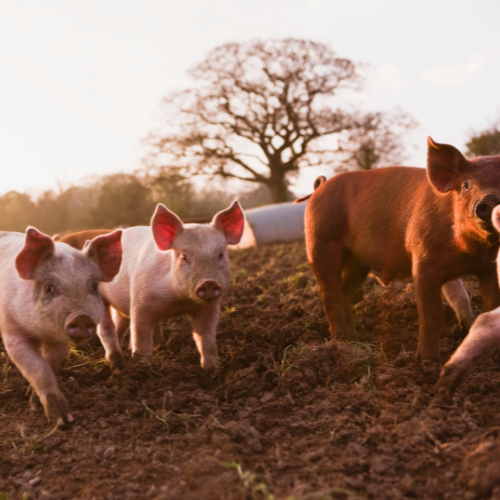Report Review: a Complex Polyserositis Case in Swine
To correctly diagnose complex disease outbreaks in swine herds, veterinarians must navigate beyond surface-level clinical presentations. This case demonstrates how traditional diagnostic approaches, while valuable, can miss critical underlying pathogen interactions that drive disease progression. By integrating comprehensive sequencing technology with conventional methods, we can unravel the true pathogenic mechanisms and develop more targeted intervention strategies.
1. Anamnesis & Clinical Findings
A swine farm reported an increase in morbidity among its grower pigs. The primary clinical signs observed were consistent with polyserositis, including lethargy, fever, swollen joints, lameness, and signs of respiratory distress. Additionally, a number of neonatal piglets in the herd were exhibiting congenital tremors, commonly known as "shaking piglets."
The initial presentation strongly suggested Glässer's disease, caused by Glaesserella parasuis. However, the presence of other clinical signs like congenital tremor hinted that a single pathogen might not be the whole story.
2. Findings with PathoSense Analysis
To gain a complete and unbiased view of the pathogens present, tissue swabs from the pericardium and liver of an affected pig were submitted for PathoSense analysis. As a hypothesis-free sequencing technology, PathoSense detects the full spectrum of DNA and RNA from bacteria and viruses in a single test.
The PathoSense report identified a significant co-infection with four distinct pathogens:

This result immediately broadened the diagnostic picture, confirming the presence of the suspected agent for Glässer's disease while simultaneously revealing three other viral pathogens that could be contributing to the overall disease complex.
3. Findings on Necropsy
Necropsy of the affected animal revealed classic lesions of polyserositis, including a thick layer of fibrinous exudate on the surfaces of the heart (pericarditis), lungs (pleuritis), and abdominal organs. These macroscopic findings were highly consistent with severe G. parasuis infection, directly supporting the PathoSense identification.
4. Explaining the Report: The Pathogen Pathway
This is where the true value of a comprehensive diagnostic approach becomes evident. With the results from all methods, we can construct a logical narrative of how the disease likely progressed—the "pathogen pathway."
-
The Primary Trigger: The presence of PRRS virus, a notorious primary pathogen that can pace the way for co-infections, is the most likely starting point. PRRSv weakens the pig's immune defences, making it highly susceptible to secondary infections.
-
The Opportunistic Invader: With the immune system compromised, Glaesserella parasuis, an opportunistic bacterium, was able to proliferate unchecked, leading to the severe polyserositis and clinical signs of Glässer's disease observed at autopsy.
-
The Secondary Players and Coincidental Findings: The other two viruses are crucial pieces of the puzzle, explaining additional clinical signs and confirming the state of the animal's immune system.
-
Atypical Porcine Pestivirus (APPV): This virus is the known causative agent for congenital tremor. Its detection is a significant finding that directly explains the "shaking piglets" observed on the farm, although its role in the polyserositis outbreak is not important.
-
Porcine Parvovirus: The detection of Porcine Parvovirus (types 2 to 7) is a classic indicator of significant immune stimulation. This virus is mostly a secondary agent; it thrives by replicating in rapidly dividing cells. When PRRSv and G. parasuis trigger a massive immune response, the body produces a surge of activated immune cells. Parvovirus "jumps on" this opportunity, proliferating within these cells. While it may or may not worsen the clinical outcome, its presence is a consequence, not a cause, of the primary infection. We regularly detect these parvoviruses secondary to other infections, confirming that a significant immune event has taken place.
-
5. Conclusion
By including comprehensive sequencing, the diagnosis of the primary viral trigger was made, followed by the proliferation of G. parasuis. Finally, parvoviruses were found as secondary or tertiary pathogens.


